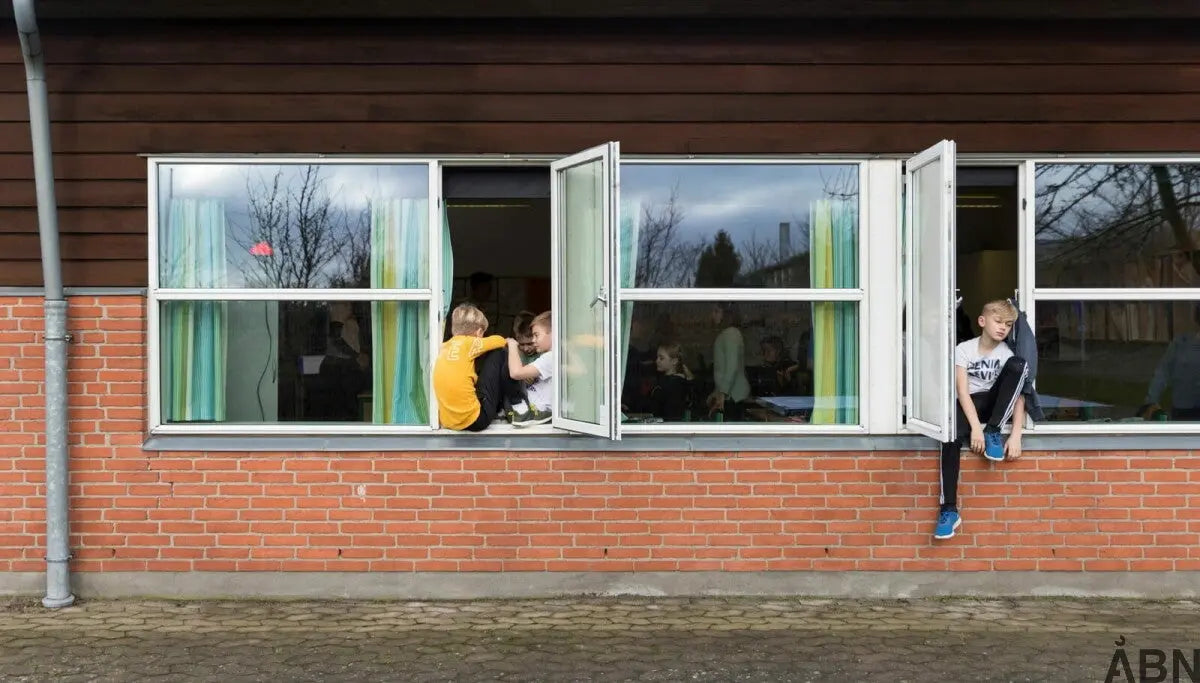In a time where sustainability and health are paramount, it is essential to focus on the environments where our children spend a large part of their time - the schools. The school climate has a direct impact on the well-being, health and, not least, learning ability of both students and teachers.
In this in-depth article, we will explore how an optimal school climate can be promoted and what importance it has for academic success and health.
What does a good school indoor climate include?
Air quality
Clean, fresh air is the foundation for a healthy indoor climate. Poor air quality can lead to difficulty concentrating, fatigue and, in the worst case, chronic health problems. The industry guidance for indoor climate in schools recommends specific strategies for ventilation systems that ensure optimal air exchange and minimize exposure to harmful particles and CO2.
Read the industry guidelines here
Lighting
Natural light plays a crucial role in creating an inviting learning environment. Sufficient daylight has been proven to improve not only mood but also students' academic performance. Artificial lighting should be designed to complement natural light, without creating glare or unpleasant lighting conditions.
Noise level
Noise can be a significant distraction and have a negative impact on both learning and well-being. Industry guidance mentions the importance of acoustic design in schools, which can reduce noise levels and improve speech intelligibility in classrooms.
Temperature and Heat management
A comfortable temperature is necessary to ensure a productive learning environment. Temperatures that are too high or too low can affect students' concentration and ability to learn. The industry guidance recommends using dynamic simulations to evaluate indoor thermal climate and implement effective heat management strategies.
The importance of a healthy school climate
Health benefits
A healthy indoor climate can significantly reduce the risk of diseases, allergies and other health problems. By ensuring adequate ventilation, optimal lighting and controlled noise levels, students and teachers are protected against potential health risks.
Academic benefits
Research supports that students perform better academically in environments with a good indoor climate. It is therefore essential for school leaders and working environment representatives to prioritize and invest in improvements to the school's indoor climate.
Well-being and well-being
A pleasant and healthy indoor climate contributes to a positive atmosphere in the school, which can improve the students' and teachers' daily well-being and motivation.
Strategies for improving school indoor climate
OPEN INSIDE+
INSIDE+ is an all-in-one, plug-and-play solution that offers schools a cost-effective method of improving the indoor climate for under DKK 150 per month, per local. The solution consists of several key components:
- Visual Indicator : An intuitive physical indicator that shows the state of the indoor climate and signals the need for ventilation, with visualization of CO2 levels, noise and more.
- Indoor Climate Dashboard : A simple, visual dashboard adapted to non-technical users that offers an instant overview of the indoor climate.
- Onboarding Process : An engaging and visual onboarding process that ensures correct use from the start.
- Data integration : Possibility of easy integration with existing systems via MODBUS and open-API, without the need for WiFi.
- Comprehensive Data Collection : Includes CO2, VOC, humidity, temperature, noise, brightness and activity in the room.
Green areas and the role of plants
Integrating plants into the school environment and outdoor learning can improve air quality as well as student learning and well-being.
Energy efficiency and sustainability
Implementation of energy-efficient solutions not only contributes to a better indoor climate, but also ensures long-term economic and environmental sustainability.
School indoor climate is an investment in society
Investing in school indoor climate is an investment in the future generation. It is crucial that school leaders and working environment representatives prioritize and work actively to create healthy and optimal learning environments. By following the recommendations and strategies highlighted in "Industry Guidance for Indoor Climate in Schools", we can ensure that our schools are places where health, well-being and academic achievement can thrive.







